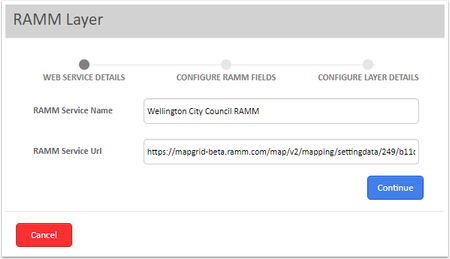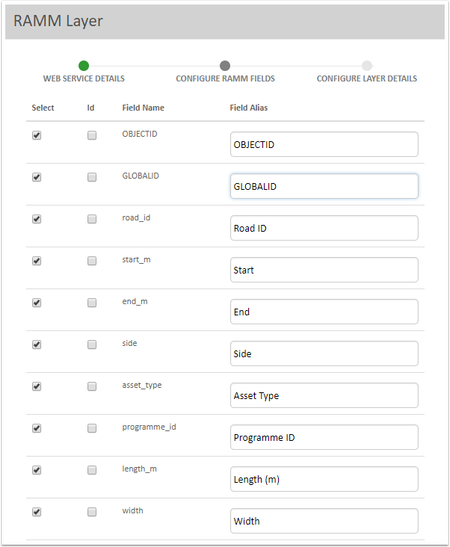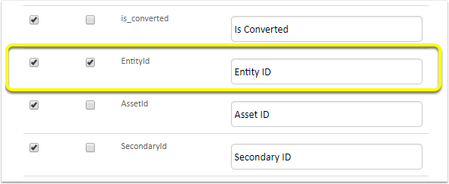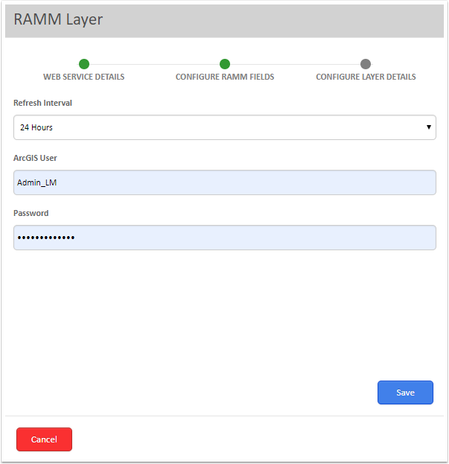Configure RAMM Layer
- To create a new RAMM Layer, click New
- Enter a RAMM Service name for the so you can identify it later.
- Enter the RAMM Service URL including any parameters. Click Continue
4. Next you can select the fields that you would like brought through in to the RAMM Feature Service. Here, you can also give them an alias, so instead of displaying road_id we can show Road Id. An important note here is that you must keep the OBJECT ID and GLOBALID as these are required by Esri.
5. You must also select one and only one identifier field, it is suggested you use "Entity ID", this issued to keep track of what features we have loaded and what may be new.
6. Next, define a desired Refresh Interval for your Layer. Options are 24 hours, 48 hours, 36 hours or 72 hours.
7. Enter your admin username and password for your ArcGIS Online or Portal organisation and then Save to create the RAMM layer.



